How to remove mold from wood – restore unfinished furniture to its former glory
If you've found mold on wood, you'll want to treat it asap. Learn how to remove mold from wood using dish soap, vinegar and more to kill spores and refresh your furniture, and home.

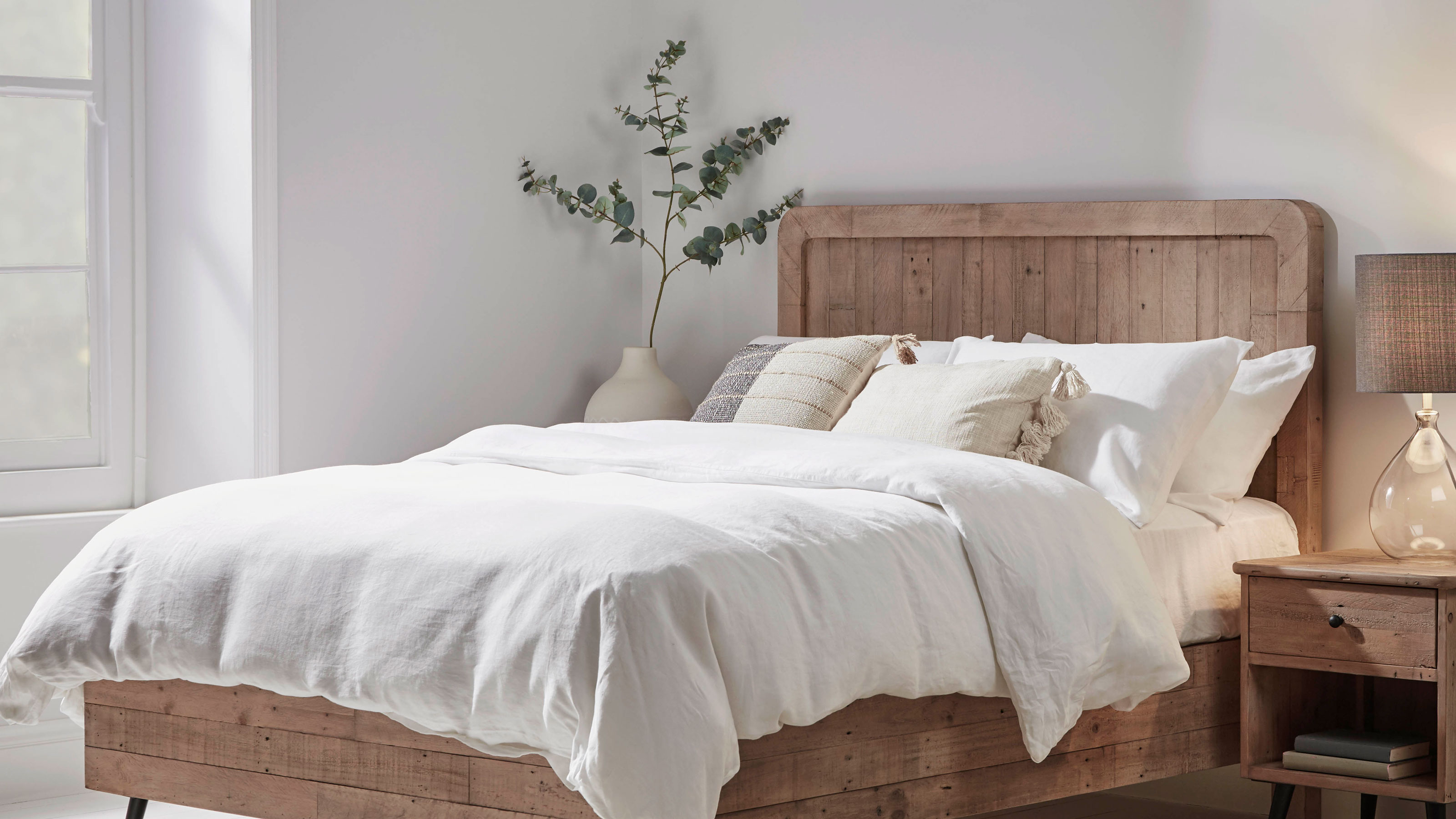
Whether you need to get rid of mold on wood because you're bringing an old piece of furniture to life again, or if your home is particularly damp and this is a repeat occurrence, rest assured, it can be done pretty painlessly. When learning how to remove mold from wood, however, it is key to approach the task with the right method and cleaning agents.
I had my head set on getting a new bed for a while, and eventually bought an Edwardian-style second-hand bed off Facebook Marketplace – for obvious reasons, Edwardian-anything=above my budget – only to pick it up and realize (once I had arrived home) that I would be removing mold before I put this bed anywhere near my sleeping space.
It wasn't out of control but there was a bit of black mold on the ends of the wooden slats and mold is never welcome in a home, especially not on your bed frame. So before I was going to even start putting my new bed back together, I wanted to tackle those slats.
You usually find mold in the bathroom, which I have dealt with a number of times, as it's a super humid environment and often hard to aerate and you can't keep your best dehumidifier in there. When mold grows on wood, similarly, it's usually the result of a damp home, and unfinished wood is often more susceptible because it's untreated and basically less protected.
What I was starting with...
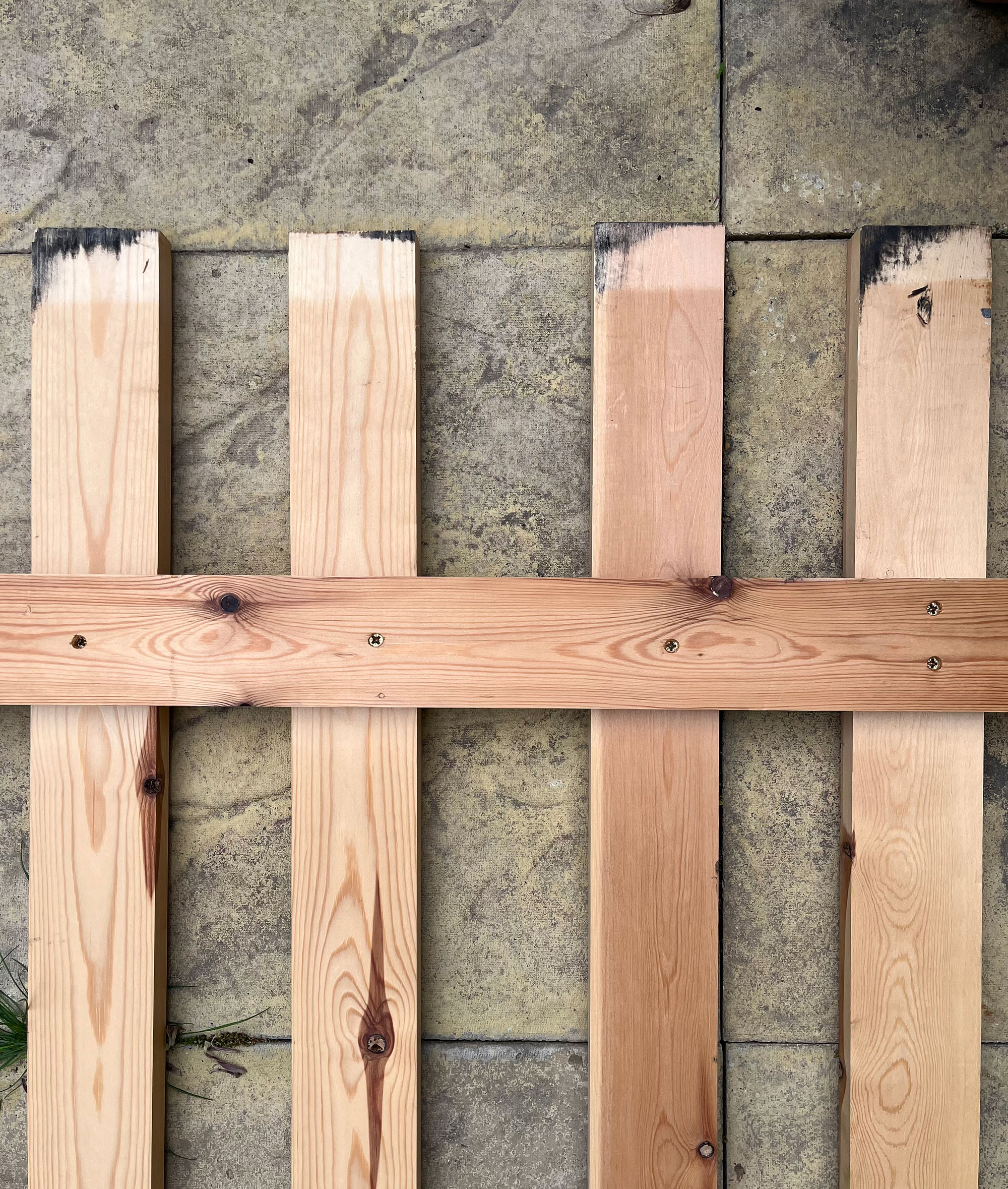
Mold outdoors, on a fence or decking for example, is fairly normal. It's not pretty and will damage the wood over time but it's not that harmful in the grand scheme of things. However, mold indoors should be removed asap as the spores are toxic to humans, especially anyone susceptible to allergies.
Speaking with Edward Jones, Founder of HomeCareHow he noted: 'Mold can be harmful to your wood. It lives on living organisms and slowly damages your wood surfaces. Mold can be transported through water, air, and surfaces it touches. It causes health problems, especially for people with allergies.'
With that in mind, I grabbed a few of my go-to cleaning tools...
Get small space home decor ideas, celeb inspiration, DIY tips and more, straight to your inbox!
How to remove mold from wood
- Washing up gloves, I use natural latex rubber gloves you can find on Amazon
- A mask
- A toothbrush (medium bristled)
- Dish soap
- Glass jug
- Soft sponge
- Microfiber cloth
- Bleach
- White vinegar
- Sugar soap
The tools you use will depend on what type of wood/wooden piece of furniture you're cleaning and on how bad the mold is. Of course, you could reach for one of the best mold sprays but half the time, you'll have what you need under the kitchen sink or in your pantry... You will however always want to wear a mask, rubber gloves, a long-sleeved top and pants, goggles/your glasses to stay protected against any spores and cleaning agents you're using.
I took this outside as it was a dry day, and it's better to remove mold in an aerated space anyhow.
1. Hoover excess black mold
Especially in cases where you have quite a lot, take your best vacuum or handheld and hoover up what you can to remove the spores. Lots of models now have HEPA filters which is a feature you should look out for if you have allergies. Be sure to clean your vacuum filter out after doing this.
2. Treat the area with dish soap and warm water
Depending on how much you have to clean, mix about 1tps dish soap to 1 cup warm water. I had about 20 slat ends to treat so I tripled those quantities and refreshed the mix every 4-5 slats to ensure I wasn't scrubbing super dirty water back onto the wood.
Use the toothbrush, and a fair amount of elbow grease, and start scrubbing away at the affected areas.
Repeat the rounds and honestly, this lifted off a lot of the mold for me. It's super effective.
Renee Kraus, founder of Renee's Cleaning Services recommends using Dawn dish soap which you can bulk buy on Amazon. 'If the mold has not penetrated the wood, use a teaspoon of Dawn in a spray bottle filled with warm water. Spray the affected area, rub with soft-bristled brush. Wipe dry with a towel.'
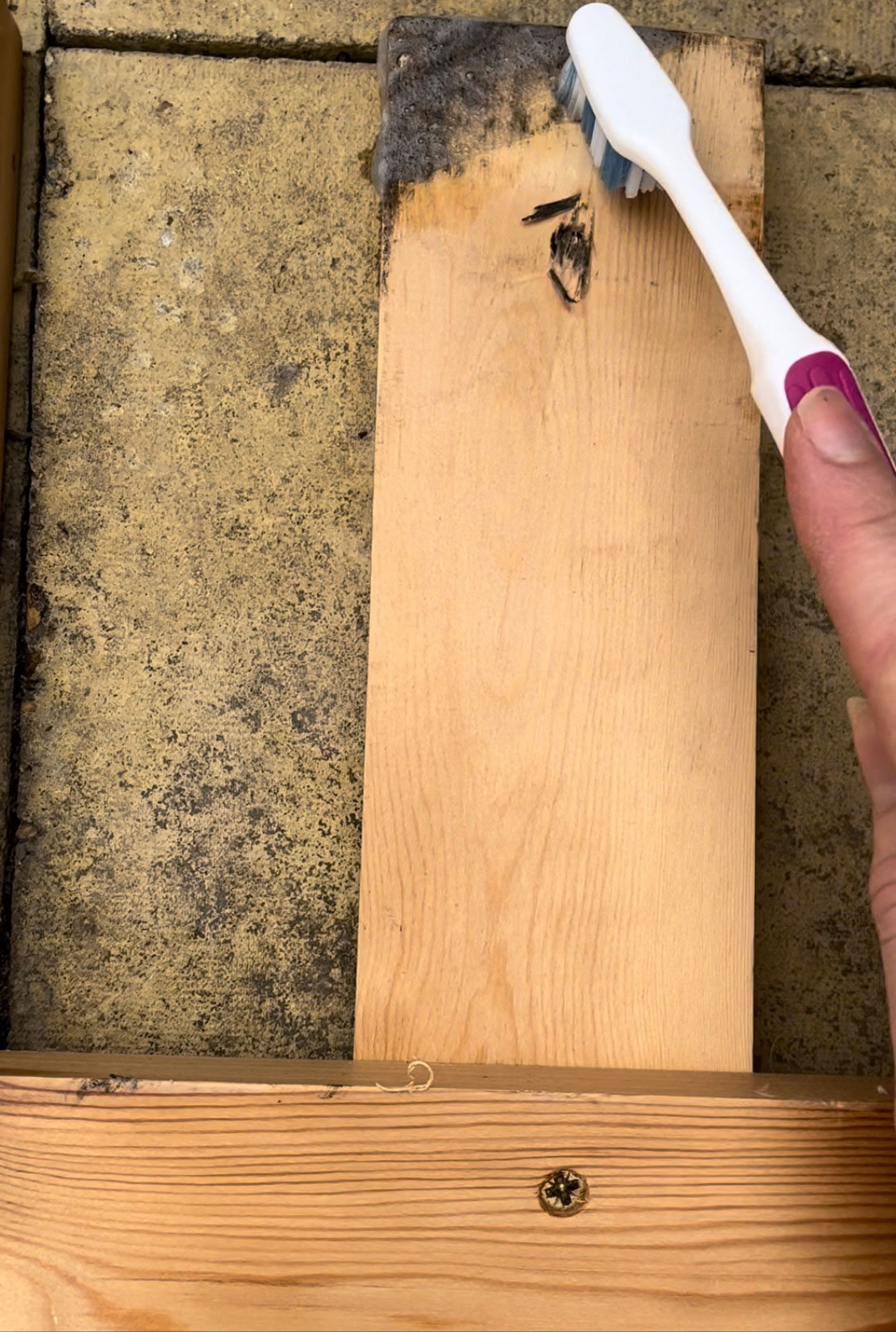
3. Lift remaining stains
If there are lingering stains, it could be a sign that the mold penetrated the wood quite deeply. This usually isn't the case with treated wood. If it's still not looking pristine, you can repeat the dish soap method a couple more times and then try lifting the last of the mold with white distilled vinegar or bleach.
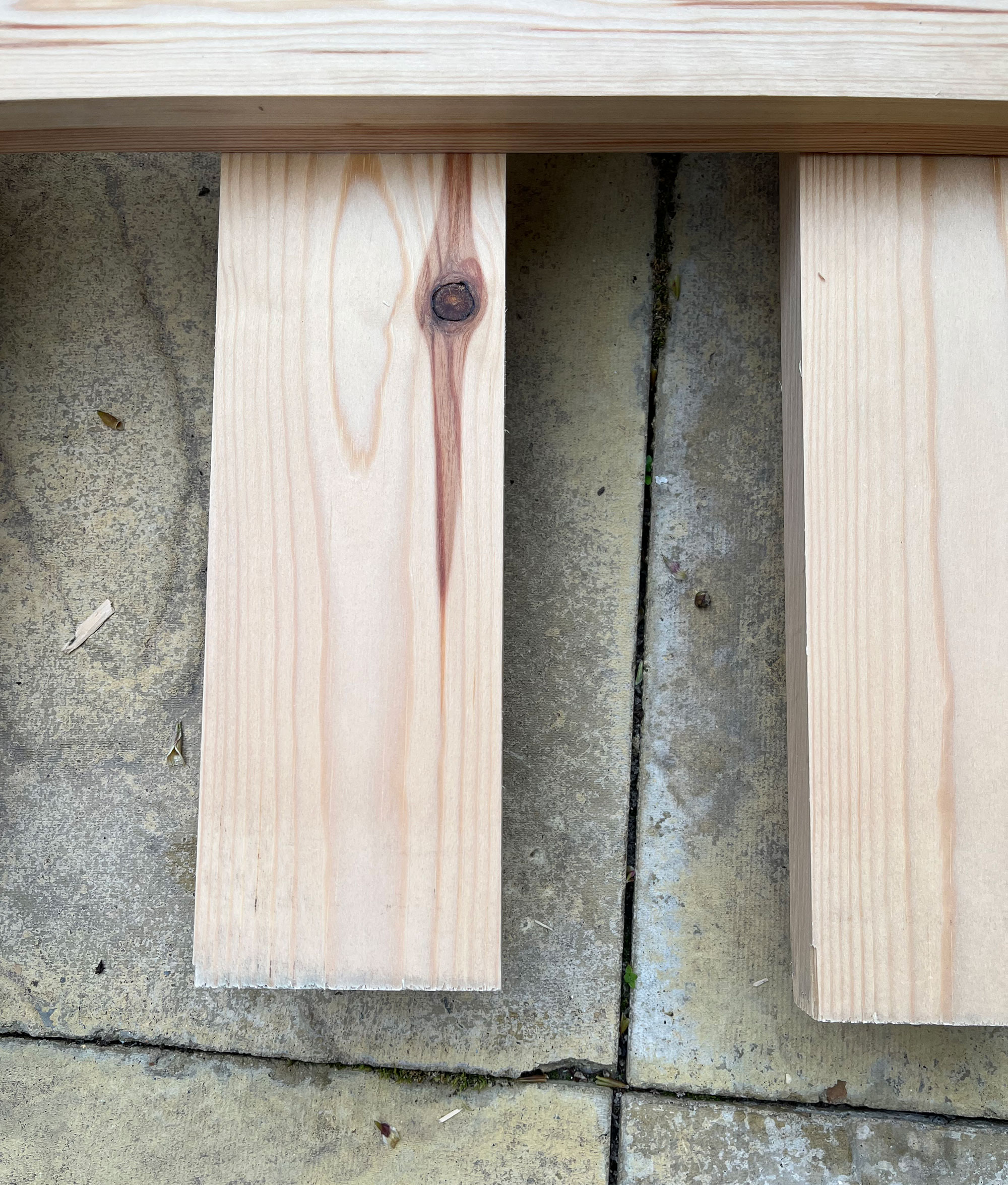
I would use vinegar to lift light mold stains remaining on the wood or, if you're removing mold from treated wood. I tend to stock up on Heinz basic white vinegar from Amazon (cheap and cheerful). You'll want to mix equal parts vinegar and water, then add this to a spray bottle and spritz it evenly over the affected area to remove the final spores. Let it air dry for an hour or so, in the sun if you can as this will help sanitize the area and clear those spores furthermore, before wiping it down with a clean dish/microfiber cloth. I like to use Seep's eco-friendly dish cloths as you can wash them afterward.
Tony Adams, from DIYgeeks.com adds 'Once you get rid of the mold, you will have to get rid of the mold stains. Vinegar is a great option for porous materials such as wood. Vinegar will penetrate deeply into the wood and get rid of the mold. I recommend using pickling vinegar because it's more acidic than normal vinegar.'
If you are using raw untreated wood as I was with these slats, use bleach to be on the safe side. Simply mix about 1bsp neat bleach with one cup of warm water and use a clean toothbrush to rub the solution into the affected areas. Leave this for a good hour and then wipe down as above with a clean microfiber cloth.
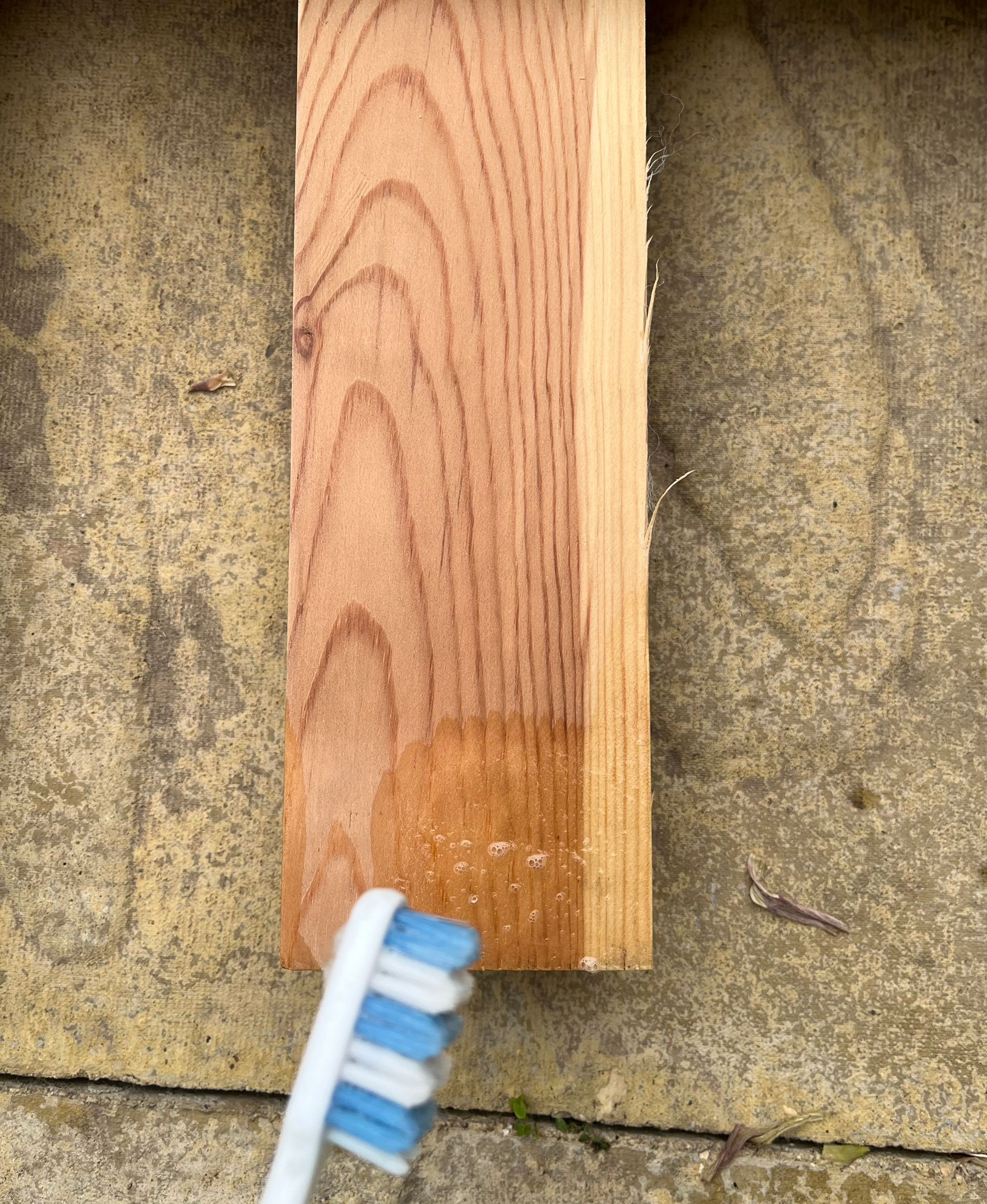
David Mason, founder of Knobs.co is an advocate for the bleach method: 'The best way to clean mold off of wood is to use a mixture of bleach and water. You'll want to make sure that you're using a ratio of one part bleach to ten parts water, and then use a sponge or cloth to scrub the mold off of the surface of the wood. Make sure that you're wearing gloves and a mask when you do this, as bleach can be harmful to your skin and lungs.'
Adams actually recommends using a Concrobium Mold Stain Remover which you can find at Home Depot. and says that Zinnser stain remover is also a great product.
Kraus recommends trying Borax as a last resort: 'If the mold is still there, try 1 tablespoon of borax in 1 cup of water to dissolve the borax, scrub away the mold leaving the borax on the wood. Use a fan to dry the wood.'
4. Sand down when needed
If you are removing mold or a small amount of black mold from untreated wood and the above methods aren't really scratching the surface or if it's clear that the mold has penetrated the wood deeply, you'll want to sand down the area.
It takes a little longer but it's worth it for longevity. You'll then want to protect that wood seeing as it's likely more vulnerable to mold and to avoid future recurrences. I was working with a small amount of mold per slat and the dish soap + bleach combo worked really well but I still tidied up a few edges with 120 grit sandpaper.
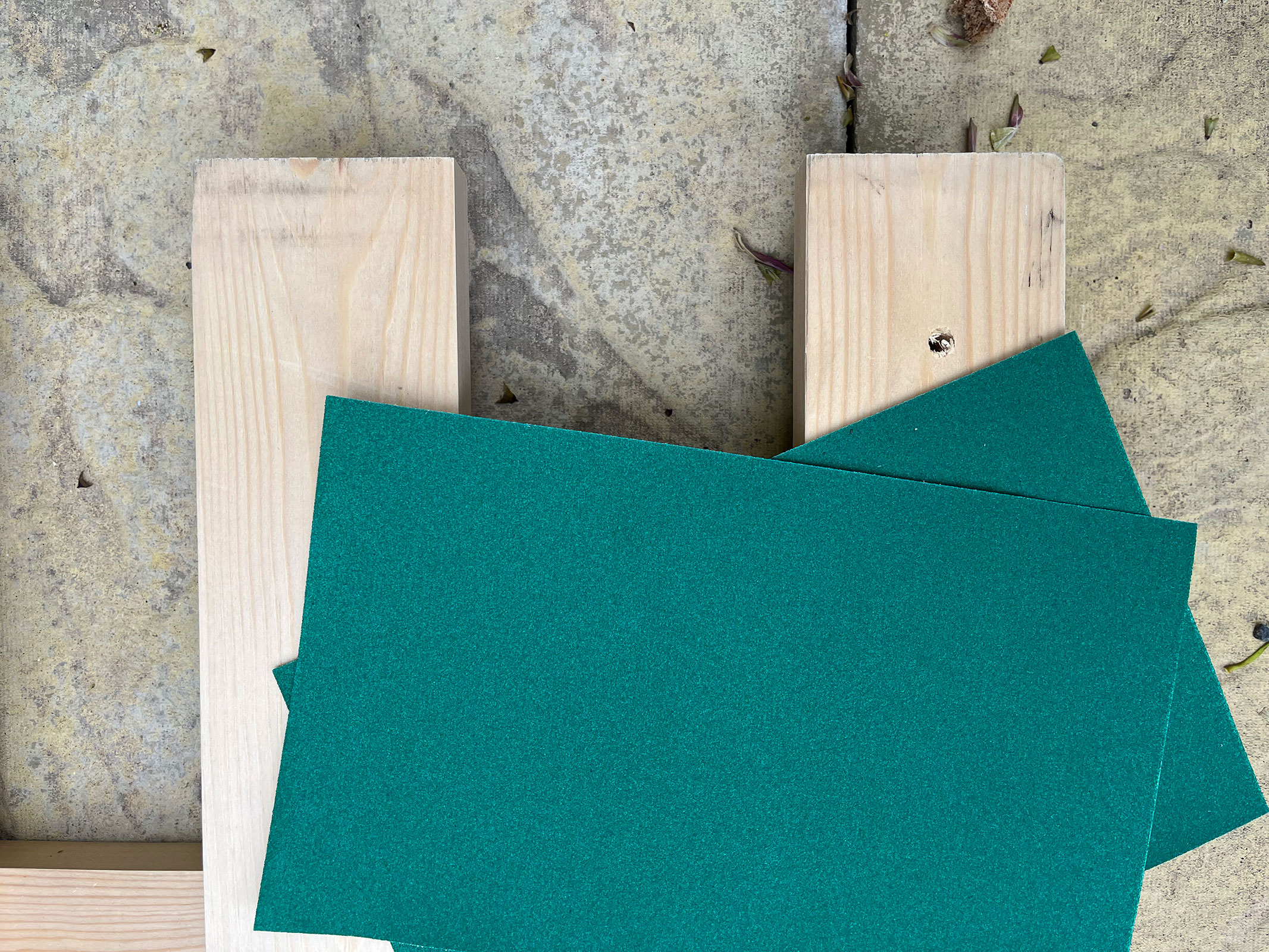
Jones adds 'To make sure that there’s no mold left on your wood, sand it. Use 100-grit sandpaper. Do not blow away the dust off to avoid spreading any spore. You should slowly swipe off using wet wipes to help gather all the dust.'
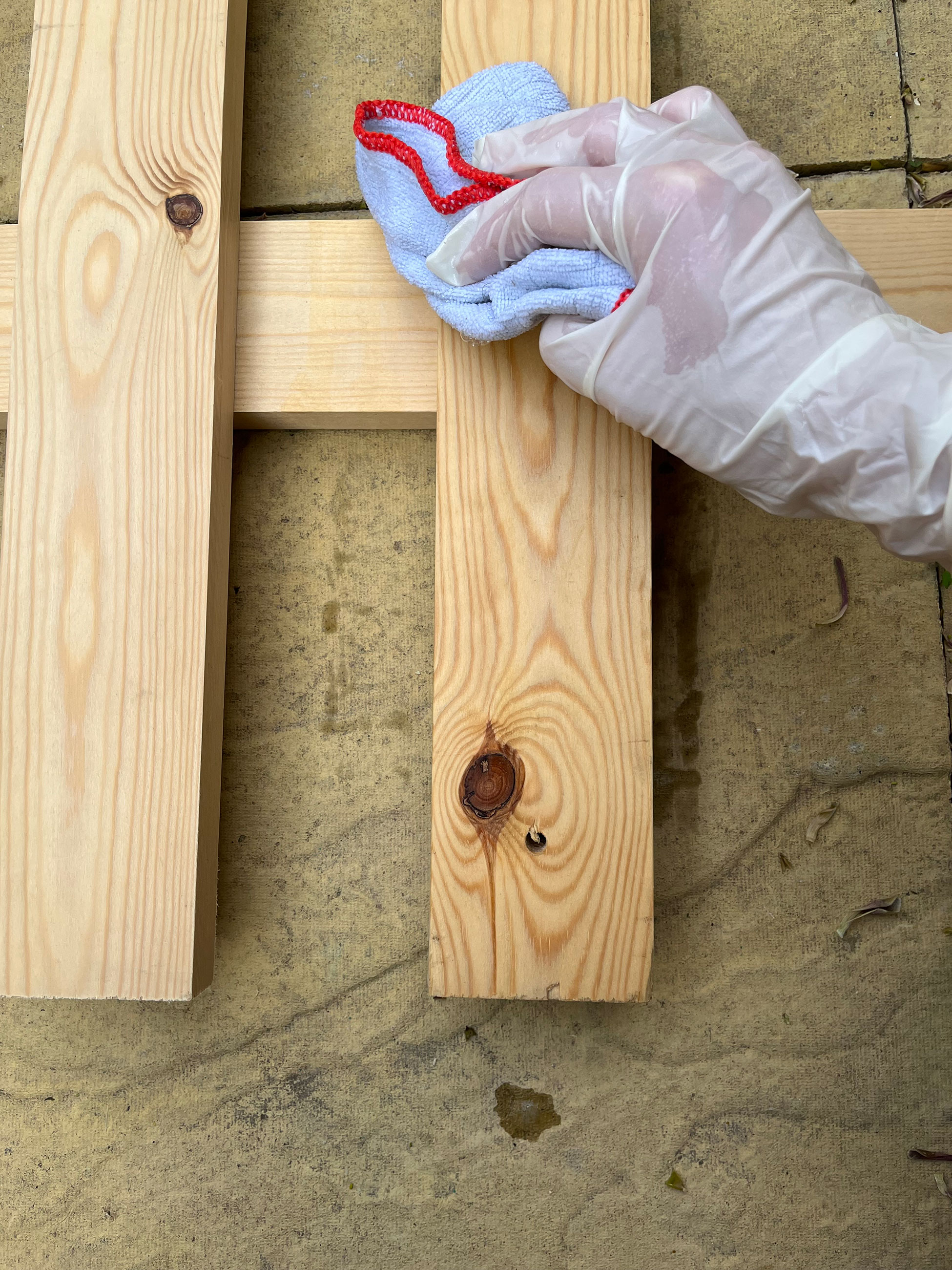
5. Protect the wood
Once dry and clean, nourishing the wood is a good idea, especially if your wood furniture is on show and in a humid spot. As my bed slats will be hidden and now at home in a room that isn't damp, I'm pretty confident that this won't reoccur so it's not 100% necessary in my case.
To protect wood, a varnish or product like Old English Furniture Polish spray is simple to use, while Emma Barton, Founder of Steam Clean Queen shares a super budget-friendly alternative: 'Old engine oil is an all-mighty mold-preventing coat that you could "paint" your wood with. Not only does it stop mold, but also gets rid of termites and other wood pests.'
Adams adds that once the stains are removed, you can refinish the wood with polyurethane.
The results
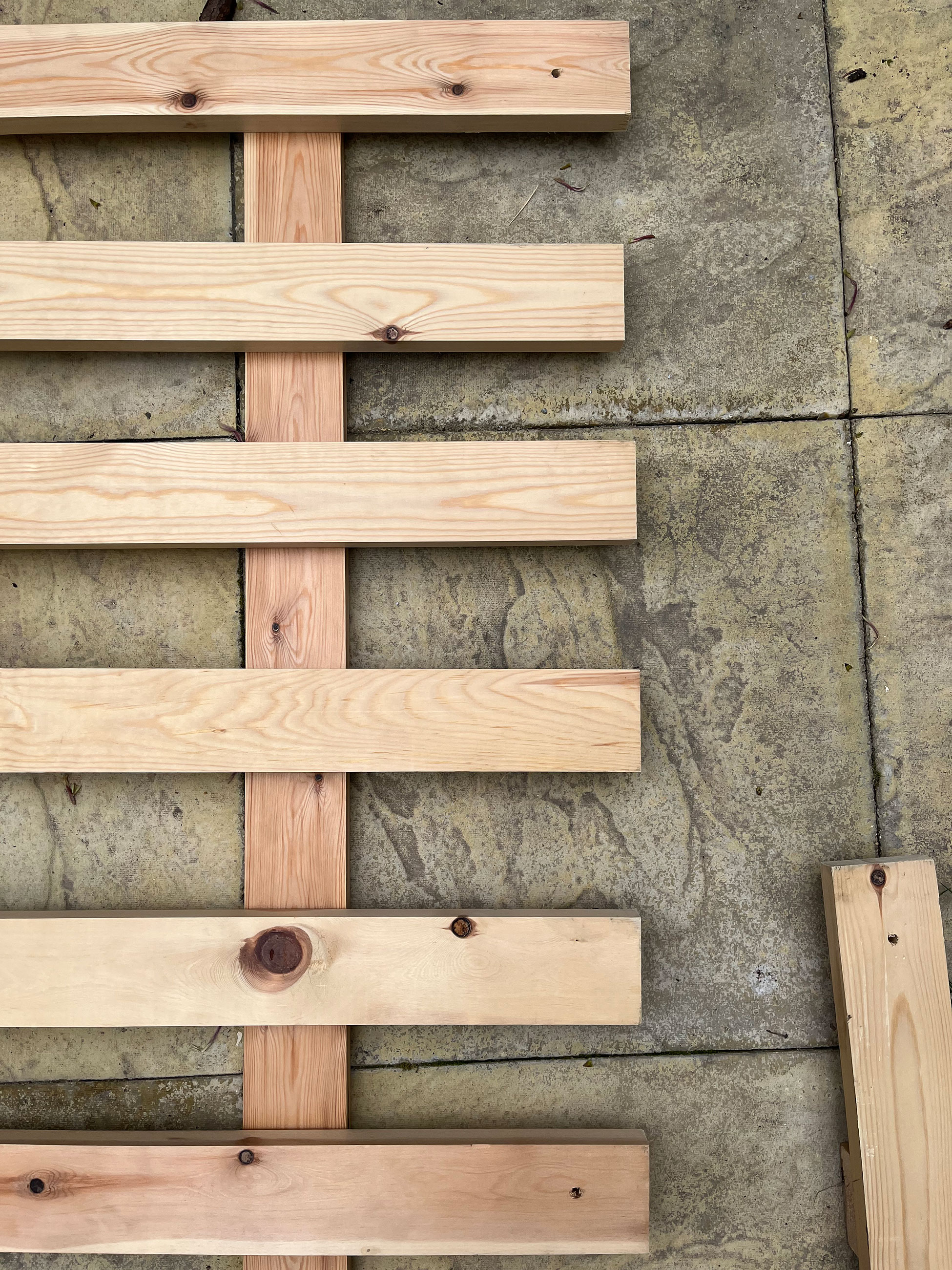
How can you prevent mold from growing on wood in the first place?
Keeping the humidity low in rooms where you have wooden furniture will prevent future recurrences. Ensure you clean off any excess water or dampness regularly then
'The best to prevent mold from growing on your wood is to keep them as dry as possible. Mold thrives in a damp environment. You can keep your surfaces dry by letting in some sun and let air circulate.' Adds Jones.
Zoey Dromgoole, Wood Flooring & Carpentry Expert says 'If you’re trying to prevent mold growth, you need to keep the surroundings quite dry. Mold naturally cannot survive in quite dry areas, so if your wood is located in a well ventilated, dry area you should have no problems. There are other chemical treatments available depending on the type of wood you’re actually trying to treat.'
Andrew Porwol, Owner of Garden Centre Shopping adds: 'Looking after your wood furniture from the moment you buy it is the best option. Applying a protective finish, preventing it from becoming too moist or damp, and cleaning your garden furniture on a regular basis are all vital. When you are not using the furniture make sure to store it indoors or under a cover for protection. If you are storing inside, and the space is damp or humid, a dehumidifier is a wise investment.'
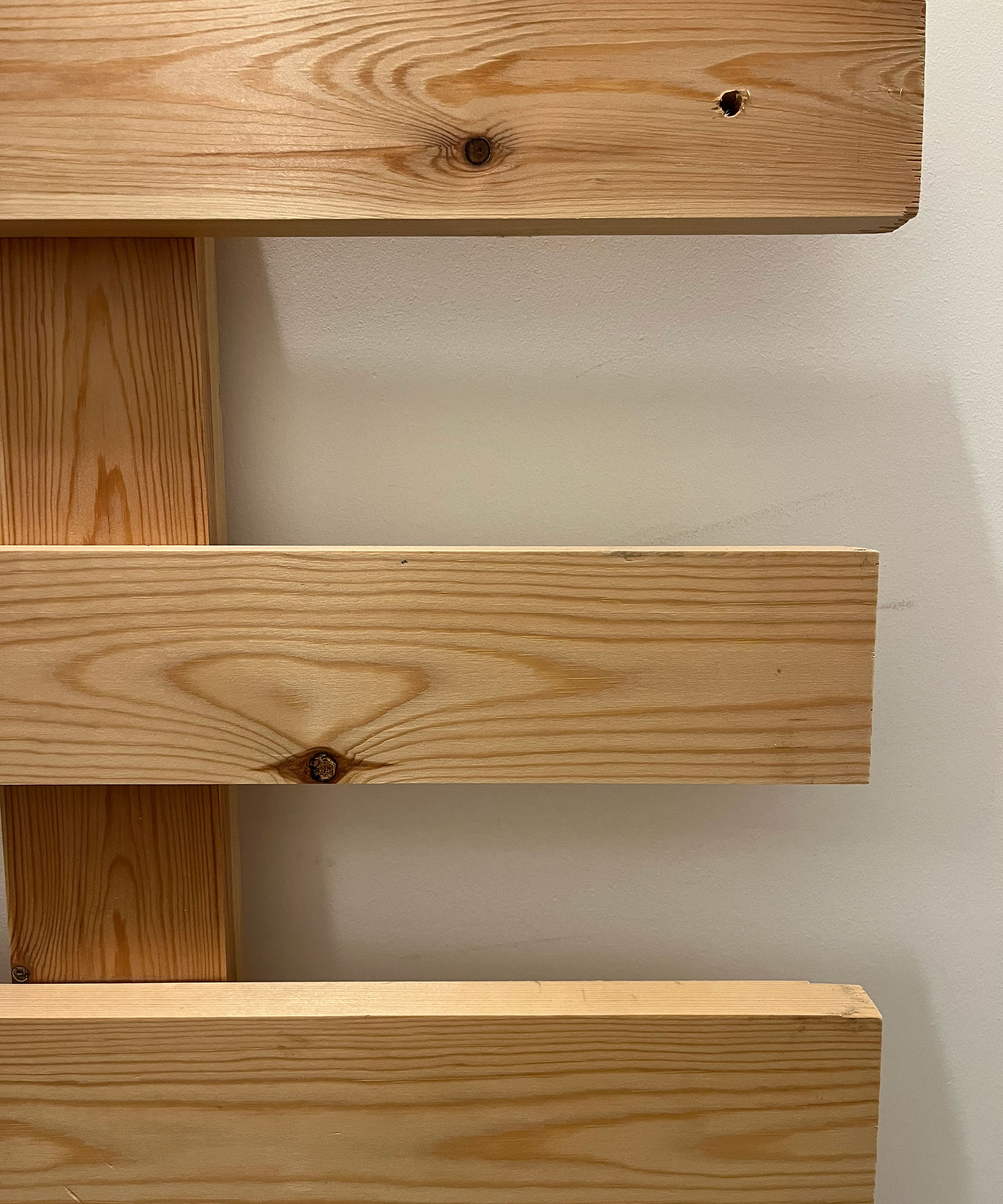
Is mold on wood harmful?
Barton echoes 'Mold is nature's way of processing dead organisms outdoors. But, indoors it leads to breathing problems, coughing, and worse - hidden sinus infection. If you can get rid of it - do it ASAP. Don't let the mold spread even further in the wood. The more it spreads, the more difficult it gets to clean.'
Porwol notes how it's key to identify what kind of mold is on your wood, 'Some can be quite toxic, whereas others are relatively harmless. First off, you’ve got mildew, which is often mixed up with mold itself. Mildew is anatomically different and is found in nearly 99% of homes at one point or another, it’s quite dusty or powdery and can be easily removed. On the other hand, you’ve got black mold. This can indeed be hazardous to humans and also are quite difficult to remove.'
Industry tips for dealing with mold on wood
- Act fast: Once spotted, tend to mold on wood quickly to avoid a bigger job or worse, having to ditch the piece altogether. Porwol says 'If you find your wood furniture has succumbed to mold, act fast. Place the furniture in direct sunlight, and clean it with either a store-bought antifungal treatment designed specifically for wood, or a homemade alternative. I use a gallon of hot water mixed with a cup of vinegar, baking soda, ammonia, and a generous squirt of washing liquid. Scrub the wood with a hard-bristled brush to remove the mold and then dry with a soft cloth. It's important to leave the furniture in direct sunlight to fully dry before applying a wood protection treatment.'
- Know what wood you're working with: Has it been treated or not? This will determine how strong a method you need to employ. Some woods also contain natural oils so you might not need to add a protective coat like you would to bare timber or oak for example, teak is one of them. 'Teak although a wood, is very different from your standard wooden furniture. It produces its own oil, is more dense and requires significantly less maintenance. To avoid mold and mildew avoid teak oil and opt instead for a sealer. The sealer will prevent mildew and mold, and should be applied yearly. As long as you store your teak furniture in a dry environment and covers are well ventilated, you should not ever have an issue with mold.' Comments Porwol.
- Treat remaining mold stains on wood: Porwol actually recommends trying baking soda as an alternative to vinegar, before resorting to bleach, 'Baking soda is a fantastic, household option to get rid of mold. The baking soda actually absorbs moisture whilst being strong enough to kill mold but isn’t as harsh as things like bleach or even particularly strong vinegars. You can mix up some baking soda and warm water in a spray bottle, with around 1 tablespoon of baking soda being more than enough. Spray the moldy area and allow it to stand for a minute or two, then scrub well. This will remove all of the mold from the surface.' He continues, 'In rather extreme cases you may need to use bleach, however it is a risky business. If the mold has penetrated deep into the wood itself (this usually happens on untreated wood) you’ll need to enlist the help of something stronger. Usually around 20 parts water, 10 parts chlorine based bleach and 1 part detergent should do the trick. Apply the mixture to the food, scrub and allow to air dry for around three days. If there’s still mold present after this time, clean again and just repeat until there are no traces left. Then you’ll need to seal the wood. If this hasn’t worked, you’ll need to sand down the wood to get rid of the mold that has located itself inside.'
- Keep wood furnishings away from humidity: This is easier said than done but Barton advises to keep wood away from humid areas. 'Mold flourishes in wet, warm conditions, like your bathroom or basement. If you can't save the wood from those areas, threat it with mold protection coats. Wood or wax coats that prevent the mold from developing and spreading.'
What kills mold on wood instantly?
Bleach and vinegar kills spores, Barton adds, 'A powerful alternative to the baking-soda-vinegar mix is dish-soap and water or isopropyl alcohol which you can find Amazon. Mold doesn't like acidic substances (like vinegar) or alcohol. It gets destroyed by them on first contact.'

I'm Cam, the former deputy editor of Real Homes who worked on the site from 2020 to 2023. As a renter myself, sharing a home with two friends (and my cat) in London, I know all too well the challenges that this can pose when it comes to creating your perfect setup. As someone who has always loved everything interior design-related, I cannot rest until a home feels right and I am really passionate about helping others get there too, no matter what their living situation, style, or budget may be. It’s not always the easiest to figure out, but the journey is fun and the results are so worth it.
After interior design, travel, art, and photography are my next big passions. When I’m not writing or editing homes content, I’m usually tapping into other creative outlets, exploring galleries in London or further afield, taking photos, scribbling, or drawing!